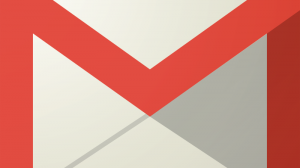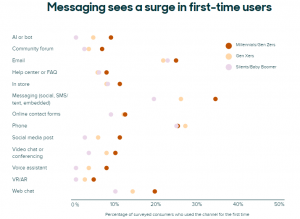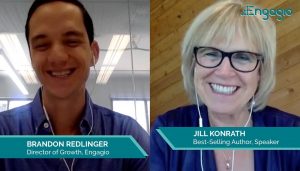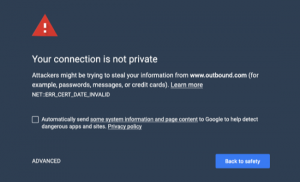Contributor Ben Jacobson shares step-by-step instructions for building a free online course that will lead to a highly targeted list of people who are ready to buy.

Although e-commerce business success can be elusive, today’s ad targeting tech and drip email solutions are opening up some significant opportunities for sellers.
When implemented with skill, email marketing has the power to create a highly targeted tribe of people you can sell to — whether it’s digital or physical products. Once you build trust and credibility with an audience, they’re willing to listen to what you have to say. And yes, this includes product recommendations.
A free online course can be extremely effective for capturing attention as it builds authority. You show your audience you know what you’re talking about, and that you’re willing to teach them for free. When people feel that you’ve given them a valuable gift, they’ll be all the more likely to reciprocate by doing business with you.
Best of all, after you put the hard work into laying everything out with this handy guide, you can automate the entire process, which frees you up to develop your next automated sales funnel.
Here are the main components to this process:
- Run a Facebook ad to promote your free email course.
- Drive traffic to a landing page.
- At opt-in, trigger the course emails.
- Throughout the course emails, casually offer upsells.
Seems simple enough, right? Well, it can be — if you have the right tools and process map.
Let’s break it all down into straightforward step-by-step instructions, along with some tools of the trade that make it all easier.
1. Maximize the relevance of your products
Whatever you’re offering, it has to be good quality, and it has to be something your prospective customers want. Think about something that will resonate with an extremely targeted niche audience.
Marketing to a group of busy new moms? Come up with a humorous quote or photo that represents the chaos and beauty of motherhood, one that can still tie in with your brand.
On-demand e-commerce platforms like Zazzle Maker and Redbubble can help a great deal with launching audience-driven products, because there’s no money investment required, and hassles like inventory, fulfillment and customer service are taken care of on your behalf.
2. Craft your course
Your online course can cover any topic you like, but for optimal performance, do some research to determine what your audience wants to learn more about. Would a course that teaches people how to walk their dogs generate interest? Probably not. The key is to create a course that solves a common problem among your audience, with answers that they can’t get elsewhere.
Continuing with our busy new mom example, a couple of options you could offer are:
- A Busy Mom’s Guide to Juggling It All — Five daily tips to help mothers learn how to ruthlessly prioritize, set reasonable expectations with family members and get everything important done — all while keeping some time for themselves. This idea can dovetail nicely into offers for products and services geared toward mindfulness and organization.
- A Busy Mom’s Guide to Getting Her Body Back — A course that teaches safe and effective postpartum exercises she can do to drop those extra pounds. Include upsells to products and services geared toward healthy body image and sustainable fitness routines that incorporate baby participation.
No matter what niche you’re in, you can create an e-course that’s designed to make life easier for your audience. If it’s the same old same old, there’s no motivation to take the course seriously, or for your audience to see you as an authority figure.
3. Set up your email autoresponder series
This might be the most time-consuming part of the process. You’ll of course need an introductory email, thanking the person for signing up and providing an overview of what they can expect from your course, as well as the timeline for the course.
You’ll then want a few emails — spread out over a few days or weeks — that will provide the actual course material. Then, you can wrap up the course by sending a note thanking your audience for participating, and then asking that they share the course with friends and family who may also find it useful.
Towards the end of the email series, start to include teasers about those upsells, but without being pushy. Don’t push products in all of the emails, or in any of the first three, or people will start to be turned off. Pay attention to the length, format, images, colors and so on when you build your email series.
The first email should be sent after the prospect confirms their subscription, but after that, it’s up to you to set the follow-up schedule. You’ll want to test and adjust this from time to time.
You don’t need a full-featured marketing automation platform for this project; tools like Drip and MailChimp can take care of everything you need, and Zapier can help you optimize the integrations between ad, list management and autoresponder platforms.
4. Establish your lead capture mechanisms
Before you launch your course, you’ll need a landing page to send traffic to. You can advertise your course with lead capture ads on Facebook and Twitter, allowing prospects to opt in without needing to leave their news feeds. But for your organic social promotions and in-house banners, it’s a good idea to have a landing page as well.
You might find that sending traffic to a landing page serves you better than lead capture ads, because once someone is on a web page that you host yourself, you can use tracking pixels to retarget them elsewhere.
There are several recommended landing page builders out there, including Leadpages and PageWiz, but if you’re looking to get a little extra bang for your buck and trim down the time you spend on setup, a platform like GetResponse not only allows you to build your email series but also includes a landing page builder.
5. Book your ad
When it comes to Facebook ads, most experts find that photos with people in them perform best, because they capture attention and work to prevent ad blindness. Include an image, with some short course offer text superimposed on the visual. Tools like Canva and Pablo make this easy for non-designers.
After you’ve crafted your ad, set a budget and customize your audience. You can always adjust these variables after the campaign starts, so you know you’re getting the best possible return on your investment.
It’s a good idea to focus on people who don’t already like your Facebook page, but to capture existing fan loyalty, you may want to consider advertising to them as well. Test your ads often to ensure you’re using your budget wisely.
6. Monitor and optimize
Once it’s all set up, don’t stop — continue running those ads and offering the free course. You want to keep bringing those leads in, so you can keep selling products and generating revenue.
Campaigns eventually “exhaust” their audiences, so it’s important to keep refreshing those targeting parameters. You can also set up follow-up emails to course graduates, sending different messages to segments who have bought your products from those who haven’t.
Since every niche is different, you’ll need to spend some time testing what works and what doesn’t. You may want to invest in split-testing tools like Optimizely or VWO to test various elements of the funnel, such as ad copy, landing page copy, colors and images. Run one test at a time until you figure out what your audience responds to the best.
Even if it doesn’t drive stellar sales performance, your course can help you learn a great deal about your prospects. If someone is interested at the beginning but falls off somewhere in the middle, you know they’re not the exact target you’re looking for. You also know, if it becomes a pattern, that you’ll need to make adjustments to your curriculum or targeting methods to continue to entice people to opt in.
Experiment with the number of emails in your series, implementing video and worksheet assets, and adding or removing information as you see fit based on the analytics data from your email platform of choice.
Teach your audience for automated e-commerce sales
Once you’ve got your funnel down pat, automation will take care of it all for you. You’ll need to monitor your campaign’s performance and keep optimizing, but other than that, this is basically passive income. You can use the time saved by automation to scale up and create new courses for new niches.
Continue following the process with various products and niches, and you could have your own e-commerce empire in no time. Just don’t forget to keep in touch with all of the leads you capture after their courses are complete. You’ll want to continue offering value to those audience members, incentivizing them to share their love of your products with their peers and increasing their overall customer lifetime value.
Some opinions expressed in this article may be those of a guest author and not necessarily Marketing Land. Staff authors are listed here.
Marketing Land – Internet Marketing News, Strategies & Tips
(56)
Report Post






